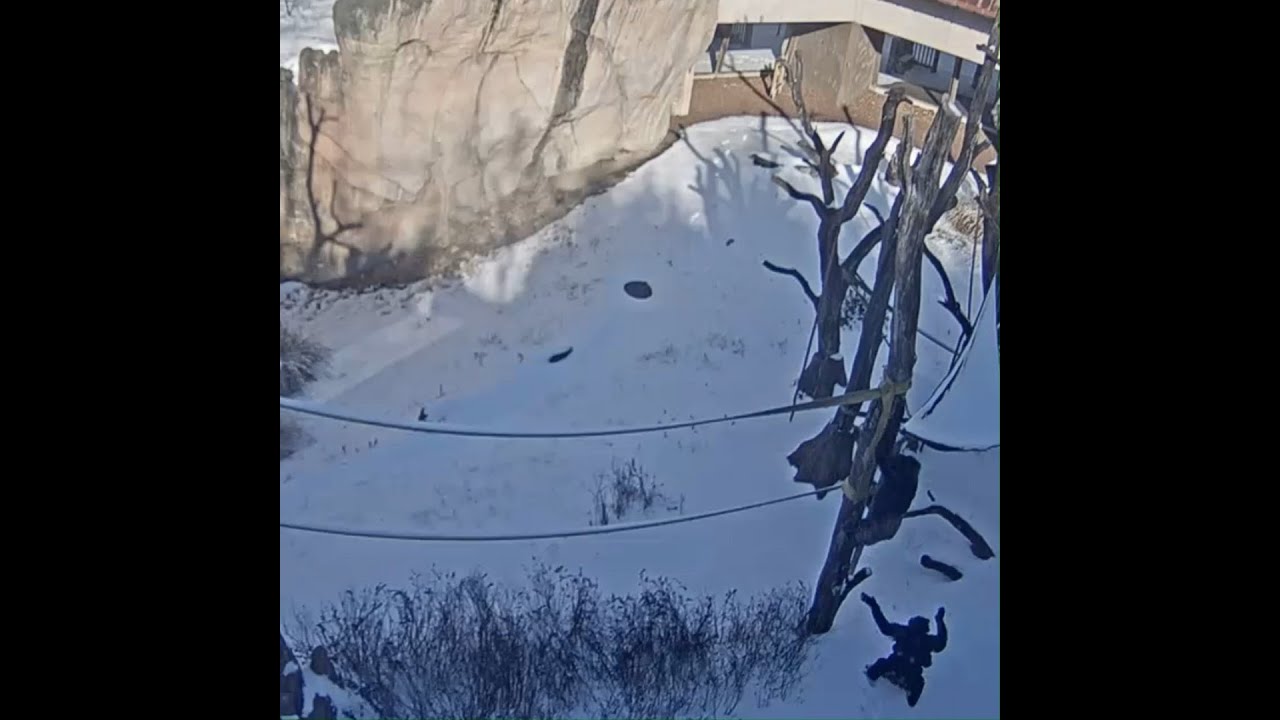- Chimps’ Exploration of Snowy Habitats at Saint Louis Zoo: Behavioral Observations and Adaptation Strategies
- The Role of Zoos in Promoting Wildlife Conservation and Awareness
- Integrating Enrichment Activities for Chimpanzees in Captive Environments
- Educational Value and Public Engagement Through Wildlife Videos
- Challenges and Opportunities in Managing Cold-Weather Conditions for Tropical Animals
Chimpanzees are known for their intelligence, curiosity, and complex social structures. These traits make them a fascinating subject for both behavioral studies and public engagement. Recently, the chimpanzees at Saint Louis Zoo had a novel experience that captured the attention of both researchers and the general public—a venture into a snowy outdoor habitat. This initiative provides valuable insights into the behavioral adaptations of these primates when exposed to non-native environments. Observing chimpanzees explore snowy landscapes offers a unique perspective on their resilience and flexibility, important areas of study in both zoology and wildlife conservation.
One of the most enlightening revelations from this experience is how chimpanzees, native to African forests and savannas, showcase their behavioral adaptations in an unfamiliar climate. During these snowy excursions, the chimpanzees exhibited various coping strategies to manage the cold setting. Their curiosity drove them to investigate their surroundings, touching and manipulating snow with their hands and feet. Interestingly, many of the chimpanzees displayed a notable comfort level in navigating the chilly terrain, perhaps due in part to their natural adaptability.
In analyzing footage of their snowy interactions, one can see the depth of their exploration, characterized by playful antics and social dynamics. Behavioral studies underscore the primates’ ability to innovate, adopting new methods of interaction with their environment. This adaptability is crucial for survival in the wild, where changing conditions require rapid and effective problem-solving skills. Moreover, such behavioral studies enrich our understanding of chimpanzee cognitive functions, further emphasizing their sophisticated mental capabilities.
Meanwhile, the Saint Louis Zoo plays a pivotal role in wildlife conservation and public education. Contemporary zoos, like Saint Louis, serve as crucial platforms for fostering a sense of stewardship and environmental responsibility among visitors. By exposing the public to chimpanzees in a setting far removed from African jungles, the zoo broadens the understanding of biodiversity and conservation. Zoos bridge the gap between people and wildlife, igniting a passion for protecting these magnificent creatures and their diminishing habitats across the world.
Like many modern zoological institutions, the Saint Louis Zoo employs enrichment activities to enhance the well-being of animals in captivity. Enrichment is essential in preventing boredom, reducing stress, and promoting physical and mental health among zoo inhabitants. For chimpanzees, the opportunity to interact with snow acts as a novel enrichment, stimulating their senses and encouraging social interaction. Handling snow, observing its melting process, and the challenge of navigating an unfamiliar terrain enrich their cognitive and physical faculties. By diligently crafting their environments, zoo experts help foster more dynamic and satisfying lives for chimpanzees in captivity.
Videos showcasing these activities serve as powerful educational tools. Footage of chimpanzees engaged in snow play is captivating and presents a rare look into their adaptability and problem-solving skills. Such media can engage audiences like never before, drawing people closer to understanding the importance of species conservation efforts. Distributed widely through social media and other platforms, these videos have a far-reaching impact in promoting awareness, driving the importance of wildlife conservation home. They show the public the efforts zoos make to balance animal care with educational outreach responsibilities.
Caring for tropical species like chimpanzees in colder climates involves unique challenges and opportunities. Zoos must balance the creation of environments that meet the specific needs of their residents, a task that involves innovative solutions. For the Saint Louis Zoo, careful planning ensures that despite the chilly Missouri winters, chimpanzees have access to warmer shelter areas. Climate control, specialized diets, and veterinary care tailored to cold exposure are indispensable in the successful management of these animals.
Moreover, these adaptive measures highlight the complex role zoos play in species preservation. They become not only centers of care but also serve as living laboratories for scientific research and innovation in animal welfare practices. Facilities like Saint Louis Zoo can trial novel interventions that enhance zoo management techniques worldwide, aligning with conservation goals.
In summary, the chimpanzees’ exploration of their snowy outdoor habitat at the Saint Louis Zoo serves several crucial functions. It provides invaluable opportunities for behavioral research, advances public understanding, and promotes wildlife conservation. These episodes underline the importance of thoughtfully designed environments that cater to the diverse needs of zoo inhabitants, reminding us of the lively connection between conservation efforts and public engagement.
*****
Source Description
The resident chimp troop here at the Zoo recently ventured out to explore their snowy outdoor habitat!
All animals at the Zoo are always given the choice to stay inside, but these adventurous chimps decided to enjoy the snow.


